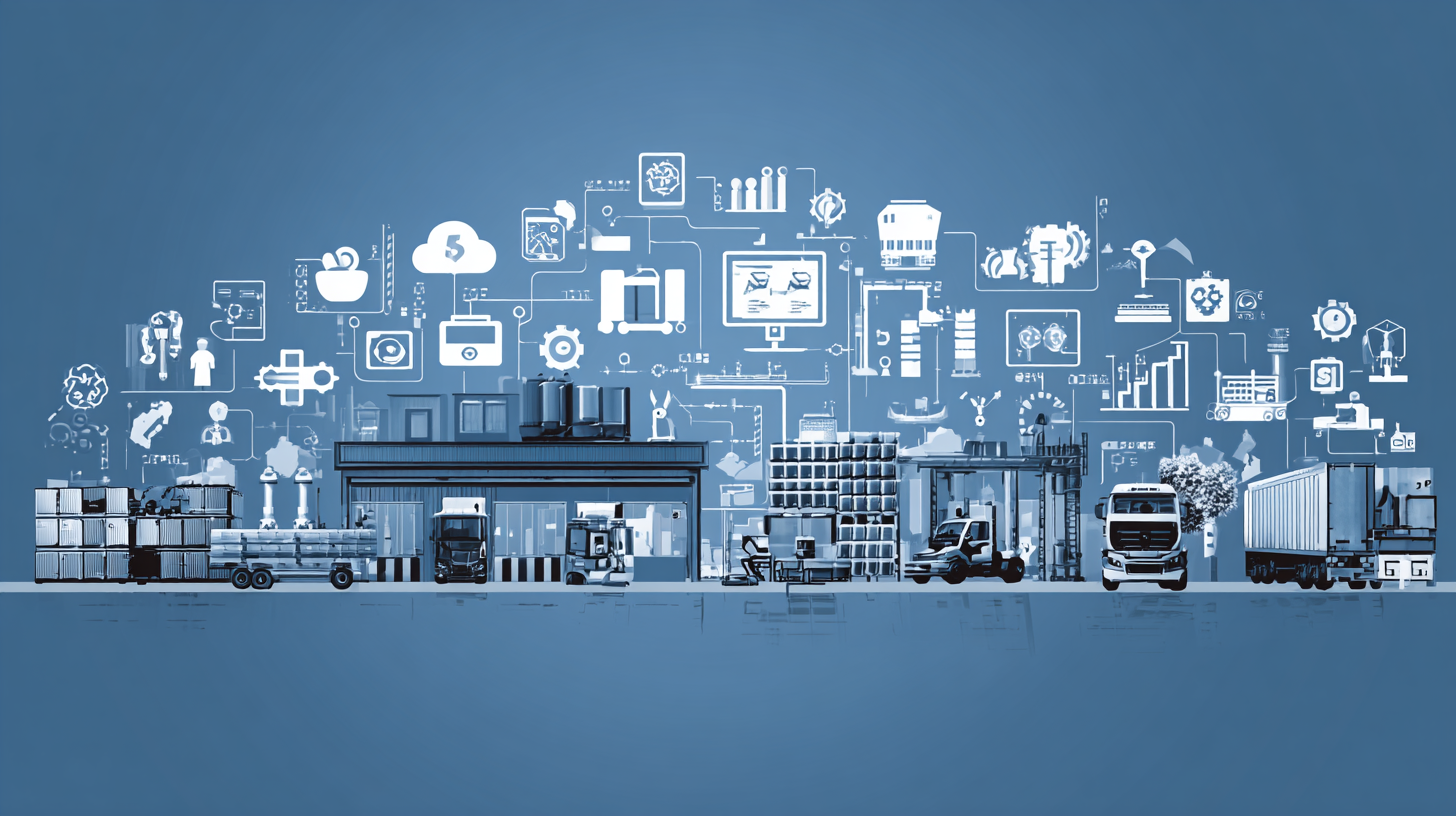

As we approach 2025, the landscape of global manufacturing is undergoing significant transformation, with manufacturers facing both challenges and opportunities prompted by technological advancements and shifting consumer demands. According to a report from McKinsey, the manufacturing industry is expected to witness a 3% annual growth rate, driven largely by the adoption of Industry 4.0 technologies. Global buyers are increasingly searching for innovative solutions that not only enhance product functionality but also optimize supply chain efficiencies. In this dynamic market, effective strategies from the best manufacturers become crucial. This blog will explore seven key strategies that industry leaders are implementing, illustrated with real-world applications, to empower global buyers in making informed decisions in an ever-evolving marketplace.

This image illustrates the insights into the market strategies for 2025, providing visual context to the discussed content.
As we approach 2025, the global manufacturing landscape is witnessing significant shifts driven by changing demand patterns. One of the key trends is the increasing importance of sustainable materials in production processes. Manufacturers are now prioritizing eco-friendly alternatives, exploring animal-derived, plant-based, and synthetic fibers to meet growing consumer demand for environmentally conscious products. This shift not only impacts material sourcing but also influences design and market strategies.
In addition, the COVID-19 pandemic has accelerated the reliance on digital technologies across various sectors. The integration of smart manufacturing technologies, such as automation and data analytics, is becoming essential for enhancing operational efficiency and responsiveness to market changes. Companies are increasingly leveraging these advancements to adapt to new consumer behaviors that emerged during the pandemic, leading to improved flexibility and product customization. As global buyers look to partner with manufacturers, those who adopt these innovative strategies will be better positioned to navigate the complexities of the evolving market.
| Strategy | Importance (%) | Expected Adoption Rate (%) | Impact on Cost Reduction (%) |
|---|---|---|---|
| Sustainable Manufacturing Practices | 85 | 70 | 20 |
| Automation and AI Integration | 90 | 65 | 30 |
| Digital Supply Chain Management | 80 | 75 | 25 |
| Lean Manufacturing Principles | 82 | 60 | 22 |
| Customization and Agile Production | 78 | 68 | 18 |
| Resilience and Risk Management | 88 | 72 | 27 |
| Collaborative Robotics | 86 | 67 | 23 |
In 2025, the landscape of global manufacturing is continually evolving, with technology playing a pivotal role in enhancing supply chain efficiency. Leading manufacturers are now leveraging advanced technologies such as artificial intelligence, IoT, and blockchain to streamline their operations. By integrating these innovations, businesses can achieve real-time visibility across their supply chains, allowing for swift decision-making and responsiveness to market changes.

Furthermore, adopting data analytics can drive predictive insights, enabling manufacturers to proactively address potential disruptions. This proactive approach not only reduces operational costs but also improves overall service delivery by ensuring products are available where and when they are needed. Collaborative technologies also foster stronger partnerships across the supply chain, enabling manufacturers to work seamlessly with suppliers and distributors, ultimately leading to a more efficient and effective supply chain model. As global buyers look to the future, those who embrace these innovative strategies stand to gain a significant competitive advantage.
Sustainability has become a cornerstone in the manufacturing sector as global buyers increasingly prioritize eco-friendly practices. According to a report by the World Economic Forum, 85% of manufacturing executives believe that sustainable practices will drive growth in the coming years. This shift is not only about compliance with regulations but also about meeting consumer demand for environmentally responsible products. Industries are aligning their operations with standards such as ISO 14001, which provides a framework for organizations to improve their environmental performance through more efficient use of resources and reduction of waste.

In response to these demands, leading manufacturers are adopting innovative strategies that emphasize sustainability. For instance, a study by McKinsey indicates that companies embracing circular economy principles could unlock up to $4.5 trillion in economic benefits by 2030. This approach not only reduces raw material usage but also encourages the recycling and reusing of products. As global buyers increasingly seek partnerships with manufacturers who demonstrate a commitment to sustainability, it is crucial for businesses to integrate these strategies into their operational frameworks, ensuring compliance with evolving global environmental standards and fostering long-term viability in a competitive market.
As we approach 2025, the realm of smart manufacturing is dramatically transforming the global market landscape. The rise of automation is not just a trend; it's a strategic necessity for manufacturers aiming to remain competitive. By integrating advanced technologies such as artificial intelligence, IoT, and robotics, manufacturers are enhancing efficiency and productivity. These innovations facilitate seamless operations, allowing companies to respond swiftly to market demands and optimize their supply chains.
The impact of automation extends beyond operational enhancements. It nurtures a culture of continuous improvement, fostering innovation within manufacturing processes. As manufacturers adopt smart technologies, they are better equipped to harness data analytics for decision-making, predicting maintenance needs, and improving product quality. Global buyers must recognize that engaging with manufacturers who leverage these advancements will yield higher-quality products and more reliable service. In sum, as we head into 2025, automation is not just reshaping manufacturing—it's redefining the very essence of global business collaboration.
In the evolving landscape of global market entry, understanding the best practices from leading manufacturers is crucial for buyers looking to navigate new territories successfully. Manufacturers emphasize the importance of regulatory compliance, ensuring that all aspects of their operations align with local laws and regulations. This compliance not only secures their position in the market but also builds trust with consumers, which is essential for long-term success.
Furthermore, a strategic approach to market entry includes comprehensive market research to identify trends and opportunities specific to each region. For instance, regions experiencing economic growth and demographic shifts present lucrative possibilities for innovative products and services. Manufacturers that are proactive in adapting to these dynamics, such as those seen in Southeast Asia's evolving markets, find themselves better equipped to meet the demands of both consumers and regulatory bodies. By focusing on these key strategies, global buyers can align themselves with successful manufacturers and effectively penetrate new markets.